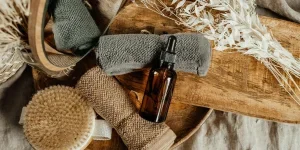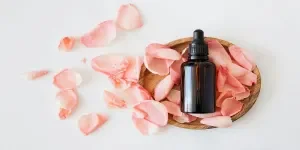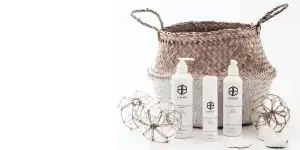There’s nothing worse than removing makeup or using cleansers with face towels that make your skin itchy. This is why face towels are important to any beauty kit—as they can make or break one’s routine.
Although a common item in a spa or salon, a lot should still go into choosing face towels for consumers. This is because everyone has a different skin requirement, so offering the wrong face towels can leave some consumers in deeper skin trouble.
Keep reading to learn more about choosing the perfect face towels in 2024.
Table of Contents
A summary of the face towel market
What are the different types of face towels?
Everything sellers should know before selecting face towels
Wrapping up
A summary of the face towel market
Towels are among the most essential consumer products, as they’re in every household and used daily. Experts valued the market at USD 11.03 billion in 2023, expecting it to reach USD 14.92 billion by 2030 at a 4.41% compound annual growth rate (CAGR).
The towel market’s latest trends include sustainability, enhanced functionality, design simplicity, and personalization, catering to consumers’ evolving preferences/ needs. Here are other stats to note:
- Cotton dominated the material segment with an impressive 47% market share in 2022. Experts predict bamboo will also witness increased demand, allowing the segment to register the fastest CAGR from 2023 to 2030.
- Asia Pacific accounted for the largest market share (around 41%) in 2022. In addition to maintaining its dominance, experts also predict the region will register the highest CAGR (5.00%) over the forecast period.
What are the different types of face towels?
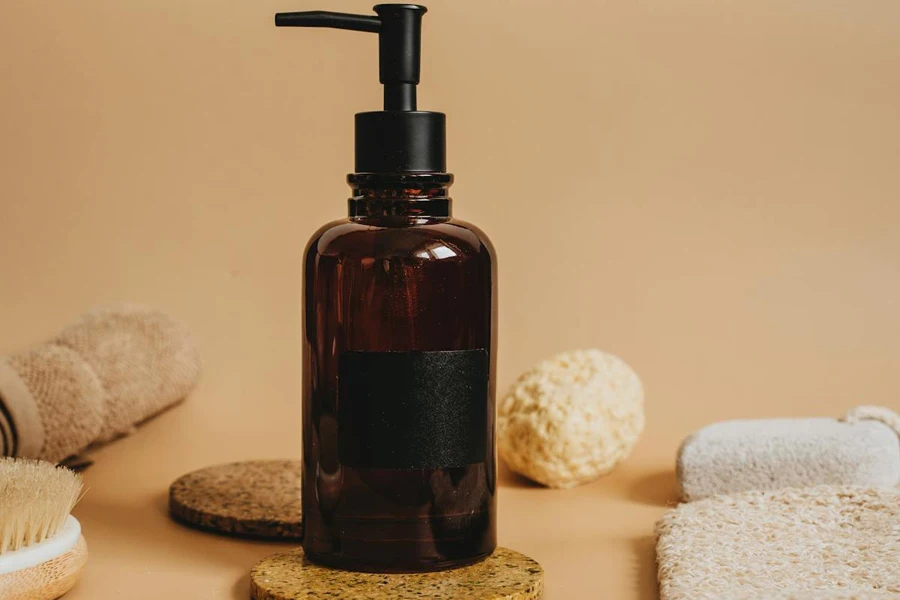
Spa face towels are likely the most common items in a beauty salon. But what most people don’t realize is that there are many types. In addition to the traditional variants most consumers are used to, disposable and compressed types are also available. Here’s a closer look at each of them:
Traditional face towels
Also known as washcloths, spa face towels are small fabric pieces designed for gentle exfoliation and cleansing. Manufacturers primarily make them from cotton, microfiber, or bamboo, but some variants come from other fabrics, like silk and muslin.
Traditional spa face towels offer various sizes, textures, and colors, making it easy to pinpoint the right ones that match target consumers’ preferences.
Compressed face towels
Compressed spa face towels make things even smaller than traditional variants. When compressed, these towels are easily the size of a small coin or large marble—an eighty to ninety percent volume reduction from regular spa face towels.
So, how can consumers use these towels if they’re so small? It’s simple: compressed face towels are highly absorbent. For this reason, they’ll expand to full-sized face towels when soaked in water. While they compress back when dry, consumers can also dispose of them.
Although they’re an easy and quick way to remove makeup and clean the face, they’re not as comfortable as regular towels. Regardless, manufacturers make them from the same materials as regular face towels.
Disposable face towels
All compressed face towels are disposable, but not all disposable face towels are compressed. These towels are the lightest and thinnest options, making them useful for daily face wiping, asides from the spa. They’re also single-use and easy to dispose—as their name implies.
While they’re less convenient than their compressed cousins, they’re more comfortable and cost-effective. More importantly, disposable face towels come pre-moistened with mild surfactants, glycerin, micellar water, and aloe vera.
Manufacturers also make them from soft, non-woven materials, like cotton or polyester. And they’re gentle enough for daily face cleaning on all skin types.
Everything sellers should know before selecting face towels
Face towel material

Face towels offer even more variety when it comes to their material. Manufacturers make these essentials from various materials to provide different benefits and cater to wide preferences. Here’s a table showing different face towel materials and what they offer.
| Face towel material | Description |
| Silk face towels | Many experts believe silk is incredible as a face cleansing cloth. The fabric is soft enough to accommodate different skin types but can loosen dead skin cells, eliminate toxins, remove makeup, and handle anything consumers want to get rid of. |
| Muslin face towels | Muslin is a lightweight cotton that’s quite popular for face towels. It offers quick dry properties, meaning it won’t harbor bacterial growth after use. They’re also gentle on the skin and easy to rinse. |
| Bamboo face towels | Bamboo comes naturally packed with antibacterial and antifungal properties, making impressive face towels. In addition to being soft and gentle, bamboo face towels can help reign in blemish-causing bacteria for acne-prone skin. |
| Konjac face towels | Consumers seeking more rigorous cleaning will love textured, exfoliating towels like Konjac. These face towels can help remove dead skin cells and give pores a deep cleaning. |
| Double-sided washcloths | Not everyone wants to exfoliate daily (it’s not recommended, too). However, consumers who want the benefits of exfoliation and regular cleaning will appreciate double-sided face towels. These towels have one softer side for daily use and a coarse side for when consumers want to scrub those pesky dead skin cells. |
Softness and absorbency
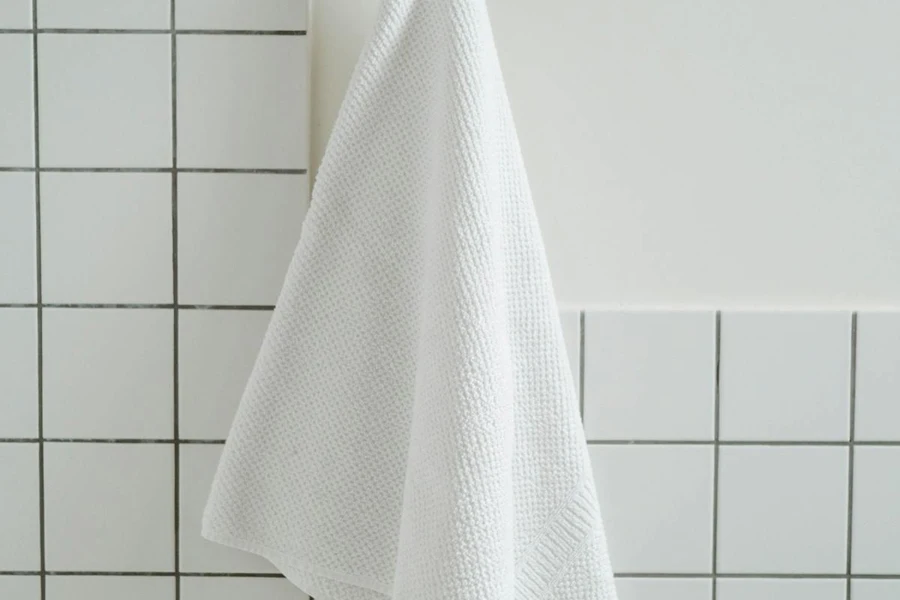
Softness and absorbency are critical factors. Businesses must not ignore any of them when choosing face towels. While absorbency determines towel effectiveness, softness shows how comfortable they’ll be in the long run.
Unfortunately, some face towels lose softness and absorbency after multiple use. In addition to prioritizing high-quality materials, consider the following factors when choosing face towels to sell:
- Avoid towels coated with softening finishes that wear off after frequent use.
- Pima cotton is another soft material worth looking at.
Here are more details on the materials listed above:
| Face towel material | Softness and absorbency |
| Silk face towels | The softest and least absorbent fabric. |
| Muslin face towels | Lightweight cotton fabric that offers impressive softness and absorbency. |
| Bamboo face towels | A sustainable fabric that offers incredible softness and absorbency. |
| Konjac face towels | A soft and absorbent fabric that’s also gentle on the skin. |
Strength and durability

While softness/absorbency are undeniably important, strength and durability determine how long the towels will last. Each material offers something different in strength and durability, but how long they last depends on how consumers use them.
Here’s a look at the different strengths and durability of each material listed above.
| Material | Strength | Durability | Notes |
| Silk | Low | Low | Silk face towels are delicate and prone to snags and tears. |
| Muslin | Moderate | Moderate | Muslin face towels are great for everyday use as they hold up well to wear and tear. |
| Bamboo | Moderate | High | Bamboo face towels are strong and resistant to wear but can fade over time. |
| Konjac | Low | Moderate | Konjac face towels are very soft but can’t withstand multiple uses. |
Drying time and shrinkage
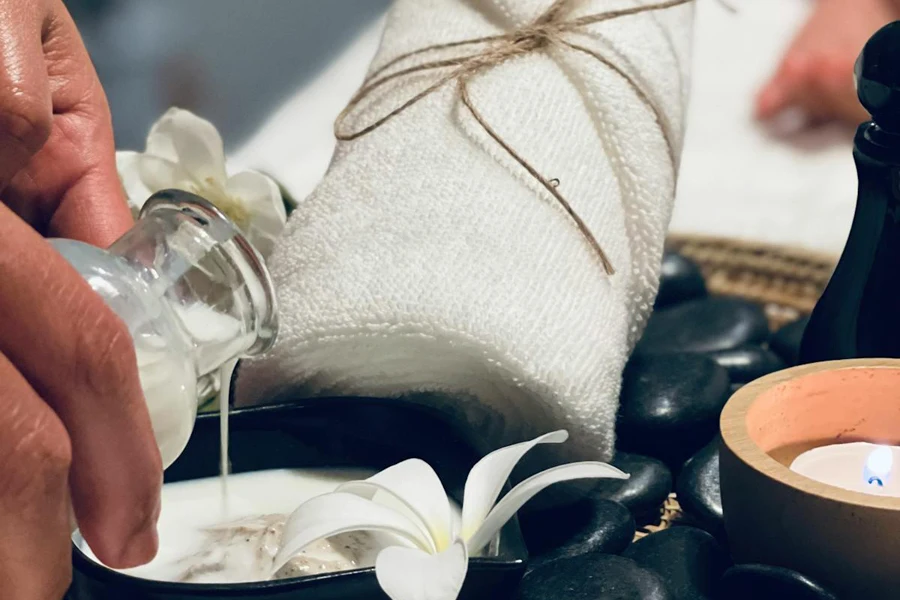
Face towels with longer drying times won’t be sufficient for daily use, so consumers may have to purchase multiple. But to avoid the unnecessary expense, they’d rather go for towels that dry quickly.
In addition, poor-quality face towels may shrink from the first to fifth use. So sellers must always prioritize high-quality products to avoid this issue.
| Material | Drying time (Air) | Drying time (Machine) |
| Silk | Short (2 to 3 hours) | Not recommended |
| Muslin | Moderate (4 to 6 hours) | Low heat, delicate cycle |
| Bamboo | Moderate (3 to 5 hours) | Medium heat, gentle cycle |
| Konjac | Short (1-2 hours) | Not recommended |
Wrapping up
Consumers need face towels for various reasons other than drying their faces. Face towels are great gentle exfoliators to help remove dead skin cells. Massaging with face towels can also help improve blood circulation and enhance skincare product absorption (like cleansers, serums, and moisturizers).
However, it’s not as simple as stocking up on any face towels sellers see on marketplaces. They must consider materials, softness/absorbency, strength/durability, and drying time/shrinkage before buying and selling face towels in 2024.
